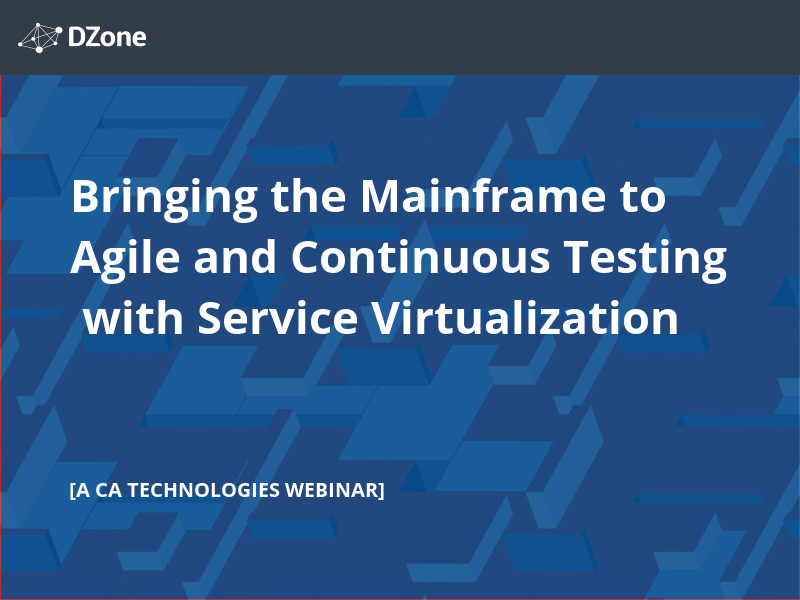Data quality isn't just a technical issue: It impacts an organization's compliance, operational efficiency, and customer satisfaction.
A discussion on Generative AI: Join industry experts as they talk about how GenAI has transformed the software development space.

Mainframe systems form the IT backbone for many organizations, providing back-end transaction processing, databases and reporting functionality. Although they are often thought of as legacy systems, this misleading characterization discounts the fact that these systems often hold critical business logic and still receive heavy investment.
Organizations that develop and test applications in mainframe environments have struggled to keep up with users’ increasing demands for innovative, new functionality. For one, mainframe development can require decades’ worth of legacy expertise, which is in danger of disappearing as a generation of workers approach retirement. In addition, modern, client-facing applications driven by the mainframe are being accessed by growing numbers of users via smartphones, tablets and other devices – stressing mainframes in unforeseen ways.
Because of these factors, new challenges have arisen within mainframe development and test operations, such as unavailable systems, inability to accurately model performance and complex test data requirements. However, by employing service virtualization to model the core business logic in mainframe platforms and their integrations with other in-house and third-party systems, teams can free themselves of these constraints, leading to faster build and test cycles, higher quality applications and lower costs. Essentially bring more agile and continuous testing practices to mainframe environments.